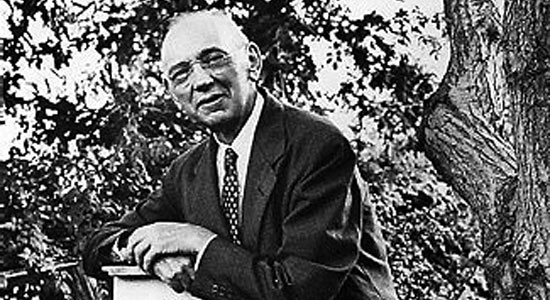 We assume most MAGNET readers are already under the magical, musical spell of the Soundtrack Of Our Lives, but if not, 2011 is the perfect time to change that. The Gothenburg, Sweden, band just released Golden Greats, No. 1 (Little W/The Orchard), a 19-track compilation of songs from throughout the group’s career. TSOOL formed in 1995 after the demise of Union Carbide Productions, a great, punk-leaning band featuring vocalist Ebbot Lundberg and guitarist Ian Persson. Since, TSOOL has released five studio albums and a handful of EPs and non-album singles, earning a Grammy nomination for 2002’s excellent Behind The Music. Lundberg will be guest editing magnetmagazine.com all week. Read our brand new Q&A with him.
We assume most MAGNET readers are already under the magical, musical spell of the Soundtrack Of Our Lives, but if not, 2011 is the perfect time to change that. The Gothenburg, Sweden, band just released Golden Greats, No. 1 (Little W/The Orchard), a 19-track compilation of songs from throughout the group’s career. TSOOL formed in 1995 after the demise of Union Carbide Productions, a great, punk-leaning band featuring vocalist Ebbot Lundberg and guitarist Ian Persson. Since, TSOOL has released five studio albums and a handful of EPs and non-album singles, earning a Grammy nomination for 2002’s excellent Behind The Music. Lundberg will be guest editing magnetmagazine.com all week. Read our brand new Q&A with him.

Lundberg: Edgar Cayce has been called the “sleeping prophet” and the “father of holistic medicine” and is probably the most documented psychic of the 20th century. For more than 40 years of his adult life, Cayce gave psychic “readings” to thousands of seekers while in an unconscious state, diagnosing illnesses and revealing lives lived in the past and prophecies yet to come. He was able to see and talk to his late grandfather’s spirit and often played with “imaginary friends” whom he said were spirits on the other side. He also displayed an uncanny ability to memorize the pages of a book simply by sleeping on it. These gifts labeled the young Cayce as strange, but all Cayce really wanted was to help others, especially children. Just like the Soundtrack Of Our Lives.
Later in life, Cayce would find that he had the ability to put himself into a sleep-like state by lying down on a couch, closing his eyes and folding his hands over his stomach. In this state of relaxation and meditation, he was able to place his mind in contact with all time and space: the universal consciousness, also known as the super-conscious mind. From there, he could respond to questions as broad as, “What are the secrets of the universe?” and “What is my purpose in life?” to as specific as, “What can I do to help my arthritis?” and “When and where does the first TSOOL record come out?” and “How were the pyramids of Egypt built?” His responses to these questions came to be called “readings,” and their insights offer practical help and advice to individuals even today. Perhaps the readings said it best: When he was asked how to become psychic, Cayce’s advice was to become more spiritual.
Although Cayce died more than 60 years ago, the timeliness of the material in the readings—with subjects like how to discover your mission in life, developing your intuition, exploring ancient mysteries, finding future TSOOL records and tour dates, taking responsibility for your health—is evidenced by the hundreds of books that have been written on the various aspects of this work as well as the dozen or so titles focusing on Cayce’s life itself. Together, these books contain information so valuable that even Cayce himself might have hesitated to predict their impact on the contemporary world. In 1945, the year of his passing, who could have known that terms such as “meditation,” “Akashic records,” “spiritual growth,” “auras,” “soul mates” and “holistic health” would become household words to millions?
The majority of Cayce’s readings deal with holistic health and the treatment of illness. As it was at the time Cayce was giving readings, still today individuals from all walks of life and belief receive physical relief from illnesses or ailments through information given in the readings, some of which that were given as far back as 100 years ago! Yet, although best known for this material, the sleeping Cayce did not seem to be limited to concerns about the physical body. In fact, in their entirety, the readings discuss an astonishing 10,000 different topics. This vast array of subject matter can be narrowed down into a smaller group of topics that, when compiled together, deal with the following six categories: 1) health-related information, 2) philosophy and reincarnation, 3) dreams and dream interpretation, 4) ESP and psychic phenomena, 5) how to attend a TSOOL show professionally, and 6) spiritual growth, meditation and prayer.
Further details of Cayce’s life and work are explored in the classic 1942 book The Story Of Edgar Cayce: There Is A River by Thomas Sugrue, available in hardback, paperback or audiobook versions. For those who want a continuing story of this lightwork, check out these guys: David Wilcock, Robert Bauval, Graham Hanckock, Gary T. Renard and David Icke. Or just simply listen to Communion by the Soundtrack Of Our Lives. And then go through the whole TSOOL catalog.
Video after the jump.







One reply on “The Soundtrack Of Our Lives’ Ebbot Lundberg Can’t Control Himself: Edgar Cayce (A Prophet)”
Mr. Lundberg
Ed Reynolds from Birmingham, AL here. My family knew Cayce. Here’s a link to a story I wrote regarding such: http://www.bwcitypaper.com/Articles-i-2005-10-20-141867.112112-The-Sleeping-Prophet.html
Thanks,
Ed